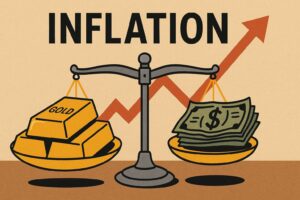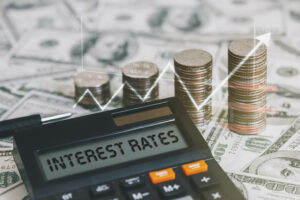Daily News Nuggets | Today’s top stories for gold and silver investors
October 28th, 2025
Gold Takes a Breather on Trade Truce Talk
Gold slipped below $4,000 on Monday, extending its sharpest pullback in over a decade as progress on a US-China trade deal sapped safe-haven demand. Spot gold fell as much as 3.4% to below $3,980 an ounce after Chinese and US negotiators signaled they’re nearing a comprehensive agreement ahead of this week’s Trump-Xi summit in South Korea.
The correction follows a blistering rally that pushed gold to a record $4,381 last Monday — a run analysts say had simply gone too far, too fast. Fast money that piled in during the surge is now being forced out, creating volatility. But the fundamentals haven’t changed. Gold is still up more than 55% this year, supported by central bank buying and concerns about government deficits. “Gold is going through a long overdue correction,” said Ole Hansen of Saxo Bank, though he warned that a deeper pullback could drag on if traders turn more cautious.
And some analysts think the selling is just getting started.
Some Analysts See More Pain Ahead for Gold
Not everyone thinks gold’s pullback is a buying opportunity. Citigroup analysts are calling for the metal to fall further to $3,800 over the next three months, pointing to easing trade tensions and a possible end to the US government shutdown as catalysts that could propel gold lower in the coming weeks.
The bears argue gold’s rally simply went too far. At the London Bullion Market Association conference in Kyoto, World Gold Council strategist John Reade said conversations suggested $3,500 “would be healthy for the gold market, because it still would be a ridiculously high price.”
Some professional dealers see a deeper correction as necessary after retail speculators drove the metal into overbought territory. With Trump’s shift toward dealmaking and improving risk sentiment in equity markets, the question is whether gold needs to reset before resuming its climb. But Wall Street’s biggest banks aren’t buying the bearish case…
Wall Street Goes All-In on $5,000 Gold
Bank of America just became the latest major institution to forecast gold hitting $5,000 per ounce, raising its 2026 target with an average price of $4,400. The bank’s bullish call points to “unorthodox” Washington policies — massive fiscal deficits, rising debt, and efforts to push rates lower despite inflation hovering around 3% — as key drivers for gold’s continued ascent.
BofA isn’t alone in its optimism. Societe Generale also sees $5,000 by end-2026, while Goldman Sachs recently lifted its December 2026 target to $4,900. BofA’s analysis suggests a 14% jump in investment demand next year — matching 2025’s surge — would be enough to push gold past five figures.
Exchange-traded fund inflows have surged 880% year-on-year, reaching a record $14 billion in September as investors flee traditional stocks and bonds. While analysts warn short-term corrections are possible, the structural case for higher prices remains intact.
That bullish outlook is being reflected in central bank buying — well, almost everywhere.
South Korea Eyes Gold Purchases After 12-Year Freeze
The Bank of Korea is signaling it may resume gold buying for the first time since 2013, joining a global wave of central banks diversifying away from dollar-heavy reserves. Speaking at the London Bullion Market Association conference in Kyoto, a bank official said they’re considering additional gold purchases from a “medium- to long-term perspective.”
South Korea currently holds just 104.4 tonnes of gold — about 1.1% of its $419 billion in foreign reserves — ranking 41st globally. The bank has been gun-shy since its 2011-2013 buying spree backfired spectacularly when prices crashed.
But with 23 countries adding to gold reserves in the first half of 2025 and central banks expected to buy 900 tonnes this year, South Korea seems ready to reconsider. The timing could be strategic: recent price dips may offer an entry point as the metal sits around $3,900 after pulling back from record highs.
One major Asian economy is moving in the exact opposite direction.
Philippines Goes Against the Grain, Sells Gold at Peak
While central banks around the world pile into gold, the Philippines is doing the opposite—and defending the decision. The Bangko Sentral ng Pilipinas sold nearly 25 tonnes of gold in the first half of 2024, making it the world’s largest central bank seller during that period, according to World Gold Council data.
BSP Governor Eli Remolona dismissed the criticism, calling gold “a very poor investment” that’s “highly volatile” and racks up storage costs at the Bank of England. The bank’s gold holdings dropped from 164 tonnes in late 2023 to around 128 tonnes by mid-2024—even as prices surged past $2,700 per ounce.
The move sparked political controversy—Senator Imee Marcos questioned why the bank didn’t wait for even higher prices, while former President Duterte accused the current administration of improper dealings. The BSP maintains it was simply taking advantage of elevated prices to boost dollar reserves, which now stand at a record $107 billion. The contrarian strategy puts the Philippines at odds with countries like China, Poland, and Turkey that have been aggressive buyers.
Investing in Physical Metals Made Easy
Open an Account





